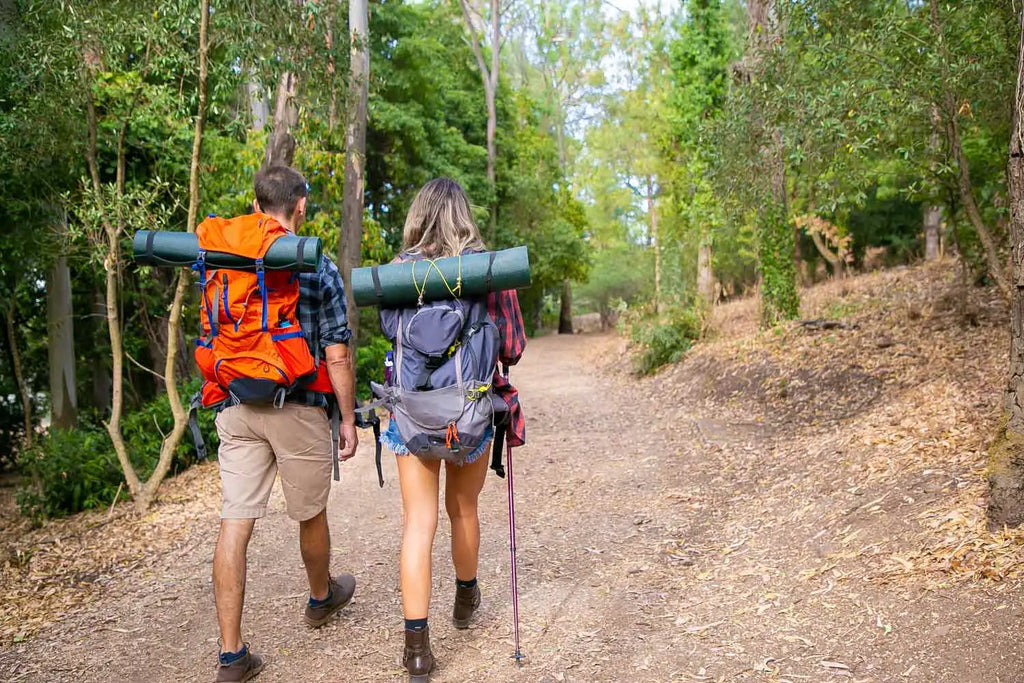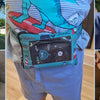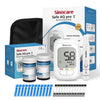Hiking or Biking with type 1 diabetes
-
Published on
Last updated on

Being physically fit for hiking and biking is only part of the puzzle. While bringing the correct quantity of food and gear is tough for any outdoor enthusiast, T1D fundamentally requires even more planning.
Physical activities can cause significant changes in blood sugar, resulting in dangerously high or low blood sugar levels, which in turn can have major health effects even for completely healthy athletes these fluctuations can have an undesirable impact on their performance or health. Even for those healthy athletes using CGM to gain a better understanding of the effects of their blood sugar on their performance and general well-being is becoming a growing trend. It may be clear what the importance is for someone Living with type 1 diabetes for whom under normal conditions without any additional physical activity, blood sugar management is already a constant balancing act, which requires the use of a variety of tools to factor in food and activity to maintain an equilibrium.
Higher altitudes can cause insulin resistance due to glucose metabolism being less efficient. Adjusting insulin dosage to accommodate for high-altitude activities should be discussed with your doctor. Blood glucose meters, continuous glucose monitors (CGMs), and pumps are known to perform poorly at high altitudes. Because CGMs, in particular, also do not work well in cold weather, it is critical to double-check blood sugar levels manually regularly. As a result, detailed instructions should be obtained from the meter or CGM producer. Certain insulin pumps may provide slightly more insulin when hiking or biking at high altitudes. What to take for your diabetes while hiking/biking depends on the length of the trek, the remoteness of the region, and your physical condition as well as your hiking/biking experience. Here are some things to consider, especially if this is your first outing since being diagnosed.
- Plenty of Glucose - The most dangerous aspect of any activity is a dip in blood sugar. Prepare for the worst by having several solutions for quickly increasing your blood sugar. Always bring glucose tabs. If you're going on a longer or more challenging hike/ bike trail, bring sugary sports to drink like Vitamin Water so you can take little doses of glucose as needed to keep your blood sugar levels stable. Pack twice as much as you think you'll need
- Even if you have a CGM, it's a good idea to bring a meter just in case. If the hike /bike takes longer than expected, you may need to calibrate while you're out. Because altitude might alter how well your sensor functions, it's advised to double-check any data.
- Hand-Sanitizer is an essential item to have during a hike/bike, before you test your blood sugar, you'll want to rinse your hands or sanitize to make sure nothing on your skin is interfering with the results as a source of clean water may not always be available.
- Extra Insulin, also be sure to have enough insulin for the hikes/ bike snacks and meals. Depending on how remote the site is and how long the hike/bike is, bring along some long-acting insulin in case you stay out longer than intended.
- Plenty of Water hiking/biking is difficult enough, but if you underestimate your insulin demands and wind up with elevated blood sugar levels, you will need to stay hydrated. Bring twice as much water as you think you'll need
Make sure your CGM is properly fixed so that it will stay secure and won't come off due to sweating or increased motion during your hike/bike. For example with a Dia-Band or Dia-Style. Store all your diabetes-related necessities into one bag that also can accommodate cooling for your insulin reserves, for example with the Dia-Go products all have sufficient space, wearing comfort, and integrated Gell cooling.
Bandages and a little bottle of saline solution: Streams carry bacteria, and because diabetics are more prone to infection, using saline solution to wipe out your wounds while hiking/biking is a safer option
While preparing for a hike/bike with diabetes may seem difficult at first, it becomes simpler with practice. It's also well worth the extra time and work. If you were an active outdoorsman before your diabetes diagnosis, depriving yourself of that lifestyle now would just add to the stress, isolation, and resentment you undoubtedly already feel. Even if you were never initially a big hiker/cyclist, you could discover that being out in nature is the perfect anecdote to the unpleasant trifle that comes with the territory of being someone who has T1D.
Both exercise and nature can heal both the body and the spirit. Instead of viewing hiking/biking as a challenge made more difficult by your diabetes, consider it an excursion that will assist you in regaining control of your life.
K-i Am





